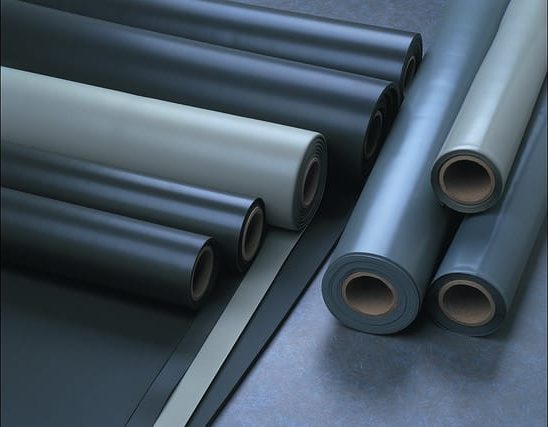
Polyurethanes are among the most prominent groups of polymers around the world. As a class, it’s rapidly expanding and used by engineers and designers in many industries because of its ability to pad, compress, cushion, and seal. Of the urethanes to choose from, Rogers PORON foam is often at the top of the list.
What is Rogers PORON Foam?
Rogers PORON is an open-cell microcellular urethane foam that is often used to develop seals, protective gear, gaskets, sportswear, and more. This type of PORON foam is known for its high energy absorption and high compression set resistance. Additionally, components made from Rogers PORON foams are highly sought-after because of their continuous performance and constant compression characteristics. Because of its open-cell design, it has greater longevity and resiliency, even with several impacts. In fact, some equipment may use PORON foam for years or even decades while the material upholds its shape.
Understanding PORON Foam Open-Cell Technology
Rogers’ open-cell design is what makes PORON foam so unique and effective. It’s meant to keep its cushioning, contouring, and shape precisely when responding to pressure. These viscoelastic traits are obtained by the PORON foam’s microcellular structure. When pressure is released, the cushioning foam expands, which creates physical memory.
Unlike many closed-cell memory foams, which can deflate due to repeated compressions, Rogers PORON continually performs while preventing leaks. It’s such a trustworthy material that it’s even been used to prevent contamination and leaks in the Hubble Space Telescope.
In contrast to closed-cell designs, open-cell alternatives have been likened to microcellular springs in that compression allows polyurethane springs to condense, letting air flow freely. At the same time, the remaining air supports pressure points within the micro coils. When pressure is alleviated, air flows easily into open cells, re-inflating the foam, meaning both polymer and air support pressure points. Because Rogers PORON foam helps prevent deflation, it’s often used in products that need repeated impact resistance.
Product Uses for Rogers PORON Foam
Engineers and manufacturers concerned with damaged product components often choose Rogers PORON foam because it helps pad, cushion, and seal components safely. Some of the most common product uses for PORON foam include the following:
- Gaskets
- Electronics and Assemblies
- Access Door seals
- Medical Device Products
- Protective Gear
- Automotive Products
- Communication Equipment
- Sportswear
- More
Grades of Rogers PORON Foam to Consider
Rogers Corporation has patented thirty-five PORON Industrial Polyurethanes. These open-cell polyurethane materials have solved unique engineering challenges, including filling gaps in the Hubble space telescope. Some of the most popular grades of PORON foam at American Flexible Products include the following:
PORON 4701-30
This polyurethane foam is among the softest PORON products, making it easy to compress and extremely flexible. It is adept at absorbing shock and sound waves and works very well in delicate applications such as providing cushioning for electronic components. However, due to its nature, PORON 4701-30 is not well-suited to handle repeated temperature fluctuations.
PORON 4701-40
This series of polyurethane foams are made with very soft PORON foam, though less soft than PORON 4701-30. That makes it a good application for a range of purposes. Its ability to endure extreme temperature fluctuations without warping is one of its most desirable attributes, along with its tensile strength and overall density. In fact, this PORON foam has been shown to function in temperatures as high as 121oC and as low as -40oC. With that said, if you’re in need of a waterproof foam, another PORON series may be a better option, such as PORON Aqua Pro.
PORON 4701-50
This line of polyurethane foams is considered firm and works very well when high-impact, high-energy gaskets are involved. Unlike other PORON foam choices, this series is denser and has a high compression deflection rating. Though it has less give than other options, PORON 4701-50 is a great choice when you need a material that absorbs or cushions intense impacts. It should be noted that some chemical fluids can cause this series of foam to swell. Be sure to speak with a materials expert from American Flexible Products to discuss your PORON needs before purchasing.
PORON 4701-60
If you’re looking for an extremely firm PORON foam, this series is for you. This foam is known for deflecting vibrations and waves without compromising its stiffness or shape and is even resistant to corrosion, tearing, and bacteria. However, because of its firmness, it’s not always best to use 4701-60 for filling in small gaps.
PORON 4790-92
This series is designed to be on the opposite end of 47-60 as it is exceptionally soft. It can function in both cold and hot environments and rebounds slowly when pressure is released. Due to its super-soft makeup, you can expect this PORON foam to last for a long time while absorbing low-energy impacts effectively. Though it boasts a good lifespan, it is not waterproof and cannot be submerged.
PORON Aqua Pro 4701-41
Unlike the other PORON foams on this page, this option has enhanced sealing capabilities unlike the other standard Poron foams. The purpose of this foam is to create airtight seals when compressed, hence the closed-cell technology. It is most often used when a long-term waterproof foam is needed that also has chemical-resistant properties. Because of its very low closure force, this foam is known to meet or surpass requirements that are often mandated in advanced applications.
Your Custom Fabricator of Rogers PORON Foams
American Flexible Products is a Preferred Converter of products for Rogers Corporation, meaning we can custom fabricate Rogers PORON Urethane foams. All of our products are custom-made and manufactured to the specifications of your design. If you’re considering Rogers PORON for your devices or equipment, contact us today to speak with a materials expert. Our team will be happy to help you choose the suitable grade, shape, and size of Rogers PORON foam for your prototype.




